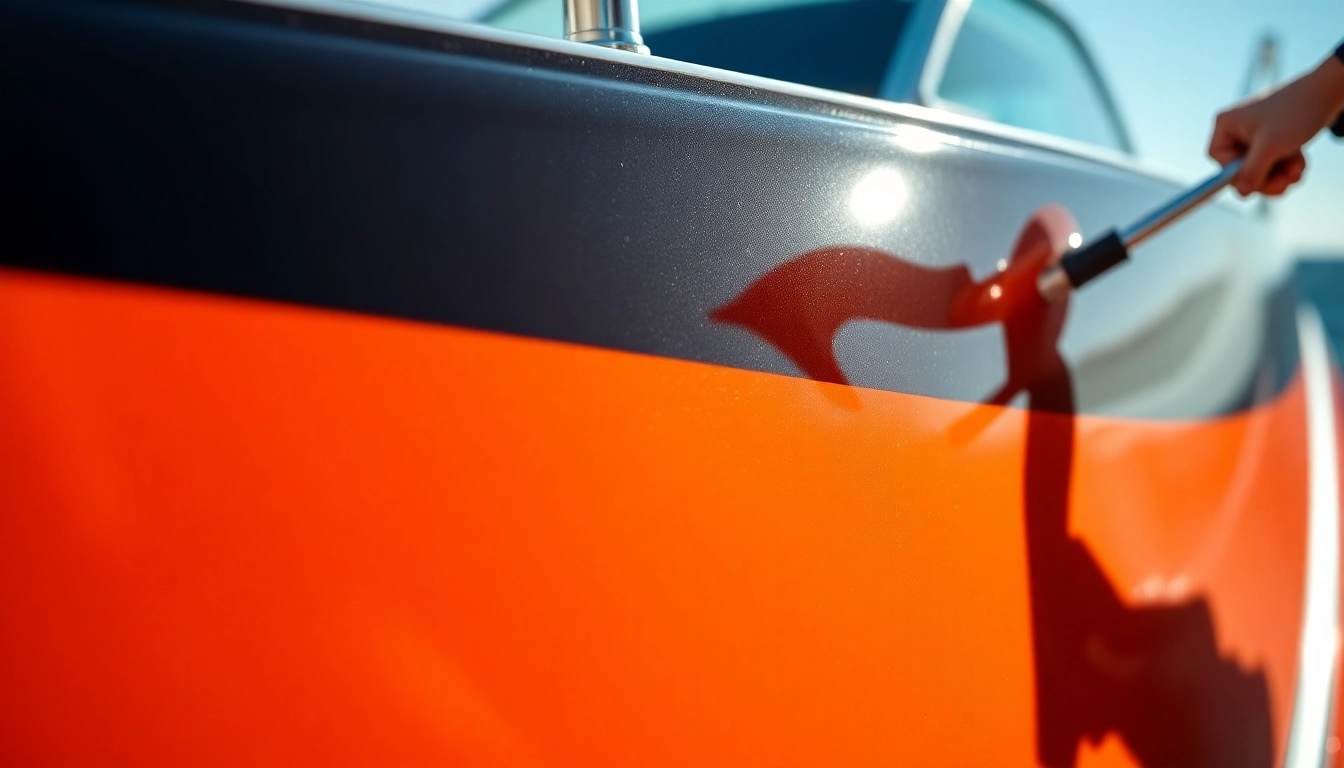Introduction to Boat Sealants: Why Protection Matters
When maintaining a boat, ensuring its longevity and appearance is paramount. Marine environments expose vessels to a range of aggressive factors like saltwater, UV radiation, algae, and constant physical wear. To combat these challenges, high-quality Boots Versiegelung—or boat sealants—play a critical role in preserving gelcoat, paintwork, and other surfaces. Proper application of a durable sealant not only enhances aesthetic appeal but also provides a protective barrier against environmental pollutants, biofouling, and UV damage, significantly extending the lifespan of your watercraft.
In this comprehensive guide, we delve into the importance of boat sealants, explore various types and application techniques, discuss common challenges, and highlight the benefits of choosing top-tier products for optimal results. Whether you own a leisure boat, yacht, or expedition vessel, understanding the nuances of marine sealants will empower you to maintain your boat in pristine condition, ensuring both its performance and resale value over time.
What Is Boat Sealant?
Boat sealant, often referred to as marine protective coating, is a specially formulated substance designed to form a resilient, watertight layer over the boat’s surface. This coating shields gelcoat, paint, and fiberglass from the harsh effects of the marine environment. Unlike standard waxes, sealants are based on advanced polymer technology that bonds tightly to the surface, providing a long-lasting protective film.
Essentially, the primary purpose of a boat sealant is to prevent water ingress, reduce biofouling, and minimize the impact of UV exposure. This is especially crucial for boats stored outdoors, where constant sun and salt exposure accelerate surface degradation. Properly sealed surfaces resist oxidation, chalking, and staining, leading to easier cleaning and maintenance.
Advantages of Using a High-Quality Marine Sealant
- Enhanced Durability: High-quality sealants form a tough, elastic layer that withstands physical abrasion, UV rays, and saltwater corrosion.
- Long-Lasting Protection: Modern polymer technology ensures extended intervals between reapplications, often lasting up to a year or more depending on conditions.
- Improved Aesthetics: A good sealant restores gloss and shine, giving your boat a brand-new appearance.
- Ease of Maintenance: Sealed surfaces are less prone to dirt and algae accumulation, simplifying cleaning routines.
- UV Resistance: Ultraviolet rays cause gelcoat deterioration; a protective sealant acts as a UV barrier, reducing oxidative damage.
Investing in a premium boat sealant is not just about appearance—it’s about protecting your investment, reducing maintenance costs, and enhancing safety at sea.
Types of Boat Sealants: An Overview
Polymer Sealants
Polymer-based sealants are the industry standard owing to their superior bonding properties and durability. They form a thin, flexible layer that effectively repels water, dirt, and UV radiation. Examples include silicone-modified polyurethanes and advanced resin formulations that provide long-term protection and high gloss.
Polyurethane Sealants
Known for their robustness, polyurethane sealants create a hard, scratch-resistant coating. They are ideal for high-contact zones and for sealing joints or edges prone to impact. These products require precise application but yield excellent longevity.
Ceramic Coatings
Emerging as the premium option, ceramic-based sealants create an ultra-thin glass-like layer that offers outstanding resistance to environmental elements. They provide exceptional hydrophobic properties and maintain their protective qualities for years with proper maintenance.
Wax-Based vs. Sealants
Unlike traditional waxes, which offer fleeting gloss and minimal protection, modern sealants are engineered for longevity. Waxes tend to wash off quickly and require frequent reapplication, whereas sealants provide durable, weather-resistant coatings that last through even harsh conditions.
Application and Maintenance: Step-by-Step Guide
Surface Preparation
Effective sealing begins with a clean, smooth surface. Use dedicated cleaning products like our Power Cleaner to remove dirt, algae, grease, and existing oxidation. Sanding or polishing may be necessary for severely oxidized gelcoat to ensure optimal bonding. Always dry thoroughly before applying the sealant.
Applying the Sealant
Follow manufacturer instructions meticulously. Generally, apply a thin, even layer using a microfiber applicator or foam pad. Work in small sections to maintain control and prevent streaks. For best results, apply in shaded conditions and at moderate temperatures, avoiding direct sunlight during application to prevent fast drying and uneven spots.
Drying and Curing
Allow the first layer to cure as specified—usually 15-30 minutes. Multiple layers can be applied for increased protection. After application, avoid contact with water for at least 24-48 hours to ensure full curing. Proper curing time maximizes bonding strength and durability.
Common Challenges in Boat Sealant Application
Blisters and Bubbles Formation
These imperfections often result from applying sealant over unclean surfaces or in unsuitable weather conditions. To prevent this, ensure surfaces are meticulously cleaned and apply in stable, moderate weather. Using a foam applicator with even pressure also helps mitigate bubble formation.
Uneven Coats and Streaks
Inconsistent application can result from hurried work or improper tools. Use high-quality microfiber applicators and work in small sections with overlapping strokes. Maintaining a wet edge helps prevent streaks and ensures uniform coverage.
Longevity Issues
Premature wear may stem from improper surface preparation, environmental exposure, or stepping on the surface during curing. Regular maintenance, such as gentle washing with specialized cleaners, can extend the lifespan of the sealant. Additionally, reapplication intervals depend on usage and environmental conditions; monitoring surface conditions annually is advisable.
Post-Application Maintenance and Care
Cleaning Tips for Long-Term Protection
Use soft microfiber towels, like our Drying Towel or Microfiber Towel Pack, to gently wash your boat. Avoid harsh abrasive cleaners, which can strip or damage the coating. Opt for pH-neutral cleaners designed explicitly for marine surfaces.
Routine Inspection and Reapplication
Inspect your boat’s surface at least biannually. Look for signs of wear, dullness, or water spots. Reapply sealant every 12-24 months, depending on exposure levels, to maintain optimal protection. Rejuvenating the surface with a polish or a fresh coat of sealant restores gloss and protective capacity.
Recommended Products for Maintenance
Our product lineup, including the Power Sealer and specialized cleaning kits, are tailored to keep your boat in top condition. For enhanced protection, consider ceramic coatings for even longer intervals between reapplications.
Why Our Boat Sealant Stands Out
Cutting-Edge Polymer Technology
Our sealants utilize advanced polymer formulations that provide superior adhesion, flexibility, and UV resistance. This cutting-edge technology ensures your boat’s surface remains protected against the most demanding environmental conditions.
Proven Long-Term Performance
Customer feedback and external tests consistently demonstrate that our sealants outperform competitors in longevity and ease of use. Regular application extends the protective effects, maintaining a glossy, well-protected surface for years.
Customer Satisfaction and Success Stories
Boaters across region reports remarkable improvements in surface gloss, ease of cleaning, and overall protection after using our products. Case studies reveal that proper application of our sealants reduces algae and stubborn stains, saving time and expenses on frequent maintenance.



